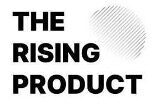TL;DR – OKRs: The top 5 pitfalls
Implementing OKRs can be deceptively simple, but sustaining their effectiveness poses challenges. The article highlights five common pitfalls organisations encounter:
- Ignoring the Framework: After initial adoption, teams may neglect OKRs, leading to a gradual decline in their utility and relevance.
- Replacing Instead of Refining: When difficulties arise, some organizations switch frameworks (e.g., from OKRs to OGSM) rather than addressing underlying issues.
- Superficial Adoption: Without genuine commitment, OKRs become mere checklists, losing their strategic impact.
- Lack of Alignment: Failing to connect OKRs across different organizational levels can result in misaligned goals and efforts.
- Overcomplicating the Process: Excessive meetings and complex procedures can overwhelm teams, detracting from the agility that OKRs aim to promote.
To avoid these pitfalls, organisations should embrace OKRs as a tool for transparency, alignment, and continuous improvement, ensuring they are integrated thoughtfully into the company culture.
The potential fixes (in a nutshell):
- Recommit to the process—don’t abandon, adapt.
- Clarify intent behind objectives and involve teams early.
- Limit and sharpen KRs—focus on outcomes, not tasks.
- Protect time for functional goals (e.g. via dedicated “Functional OKRs”).
- Anchor OKRs in strategy and KPIs, then communicate them clearly and often.
What’s the matter?
The initial stages are relatively straightforward, as is often the case with many agile methods and frameworks. However, it becomes challenging thereafter. And not just challenging, it becomes painful. Amazing. I’m a big fan! Just to clarify, the fondness for pain doesn’t stem from a self-destructive tendency. Pain is more of an indicator of one or several weaknesses.
“Agile methods are expected to solve problems, ideally immediately.”
And here lies the true value of agile methods. They bring weaknesses to light – whether in the team, the business unit, or the entire company. However, the expectation is different. Agile methods are expected to solve problems, ideally immediately – and to make everything better and faster. This only amplifies the pain. The problems not only do not disappear but, in fact, become more apparent. See also The Three Pillars of Empiricism – Transparency.
Typical Behaviour Patterns
Teams and leaders alike dislike this. I notice three key behavioral patterns emerging as agile approaches and frameworks enter this stage:
- Ignore it:
The simplest approach. Scrum, Kanban, or OKRs have been introduced. “It’s working—we need to focus on the next big thing!” The result: a slow death. The framework becomes a zombie. Rituals and artifacts turn into annoying formalities, and over time, the chance to question or adapt them disappears. It’s like a long-term relationship: “We’ve been together for so long—let’s not question things now. And what would the kids and our friends think?” - Replace it:
The classic case—especially familiar from Scrum. The team hates Scrum because they never meet their Sprint goals and feel the ceremonies eat up coding time. “Let’s switch to Kanban. It’s lighter—and no Sprints!” With OKRs, it’s the same. Either you drop them once they get uncomfortable (“It’s just not a good fit for us”) or you jump on the next hype train (“We don’t do OKRs anymore. Now we use OGSM!”). The organization stays busy and looks like it’s on the cutting edge—but really, it’s just avoiding the hard work of facing real problems. Treating symptoms instead of causes. Also a strategy. - Analyze it:
A truly agile organization doesn’t see this phase as a burden—but as an opportunity. Everyone, at every level, understands that the real work begins after OKRs are introduced. Dysfunctional artifacts or ceremonies are treated as symptoms, prompting a deeper look at the root causes. Yes, it’s tough. Yes, it eats up time. And yes, it distracts from “real” work—for a while. But in the medium to long term, it leads to exactly what agile frameworks are meant to deliver: more speed through clearer focus and greater ownership—with minimal waste.
Was machen denn OKRs?
I won’t delve deeper into the basic principle of OKRs at this point. That would go beyond the scope, and I assume most of you are already familiar with the topic. Mrs. Wodtke herself summarizes the framework best:
[…] a system originated at Intel and used by folks such as Google, Zynga, LinkedIn […] to promote rapid and sustained growth. O stands for Objective, KR for Key Results. Objective is what you want to do (Launch a killer game!), Key Results are how you know if you’ve achieved them (Downloads of 25K/Day). OKRs are set annually and/or quarterly and unite the company behind a vision.
Wodtke, Christina. Radical Focus: Achieving Your Most Important Goals with Objectives and Key Results (S.6). Kindle-Version.
The appeal of OKRs lies in two main aspects: firstly, the clearer distinction between the WHY and the WHAT on one side, and the HOW on the other. When implemented effectively, OKRs empower teams with significant strength and adaptability to find the best solutions for achieving their objectives. Secondly, when properly embraced, OKRs act as a unifying force, fostering cohesion both among teams and across organizational levels. This cohesion is inherent in the cascading principle of the framework, which requires setting individual goals always in alignment with an overarching objective.
The top 5 OKR pitfalls
I have been involved with OKRs for a few years now. It all started with a keen team. Following the anarchic principle, we just dove in, gathered experiences without waiting for the official Buy-In from the management in the first instance. Just do it. This approach allowed us to identify the trickiest pitfalls early on, which I would like to share with you here.
1. The classic: OKRs are equivalent to a project plan.
The problem:
You’ve defined OKRs at the team or company level—but somehow, it all feels like a project plan in disguise. A red flag? Objectives with ten or more Key Results, turning OKRs into glorified to-do lists. Another sign: KRs phrased as activities, like “Add metric XY to the customer report.”
The causes:
One reason may be a lack of trust—either from leadership or product managers. OKRs feel abstract, and this can lead to fear of losing control over the how. Output- and project-driven cultures struggle especially with this shift. On the team level, “tasky” KRs can also stem from delayed measurability—when new features ship at the very end of the OKR cycle, but results aren’t visible until the next one.
The fix:
Documentation builds trust. While I strongly believe in separating the what from the how, there’s nothing wrong with making the how visible—through an (epic) backlog or an agile roadmap. Sharing these regularly with business stakeholders can increase confidence in the team’s approach. For delayed measurability, stay pragmatic: frame the KR as a target state, e.g. “X feature(s) reliably delivered to Y customers.” In the next cycle, you can follow up with product metrics to measure real impact.
2. All just business, where is the function?
The problem:
OKRs are often seen as purely “business” goals—and in many ways, they are. Everything we do should align with overarching company objectives. But what about our so-called functional goals? Things like keeping the platform up to date or ensuring professional metrics monitoring? The risk is that these essential responsibilities get sidelined, leaving teams unable to fulfill their functional duties.
The causes:
Often, business departments or management are too far removed from the typical challenges faced by product and tech teams. Also, leaders are usually measured against business KPIs—not functional outcomes—so these efforts get less attention.
The fix:
Together with Tech and UX leads, it’s our job as Product Managers to explain the value of functional excellence. A key concept here is Cost of Delay: if the technical foundation erodes, it will have major business consequences down the line. Or, put positively: a strong functional foundation gives your company a competitive edge. In OKR terms, start by negotiating a dedicated “Functional Time” with leadership—around 25–30% for tech teams is a common rule of thumb. Then define functional or tech OKRs alongside business OKRs, with equal visibility and accountability in planning and review.
3. The New Corporate Beast: The OKR Planning
The problem:
Uh-oh. What started as a lightweight OKR framework quickly turns into a meeting and workshop monster during a full-scale company rollout. Endless planning marathons and tedious alignment sessions between interdependent teams drain energy and time. “Sure, planning is part of the game—and yes, we’re planning a whole quarter, not just a sprint. But this? This is not what we signed up for.”
The causes:
No need to panic—it’s normal for new ways of working to feel time-consuming at first. Following the Shu-Ha-Riprinciple and sticking to the book in early phases makes sense. But in many companies, there’s a deeper issue: the lack of a clear business strategy and structured monitoring of key business and product metrics. Or worse—these exist, but aren’t communicated or used in day-to-day decision-making. As a result, every OKR cycle starts from scratch, like Groundhog Day. Another common pitfall: an overly democratic interpretation of agile planning, where everyone is expected to co-create everything. The result? Bloated workshops and decision fatigue.
The fix:
Start with strategy. And look at your metrics regularly. Make KPI reviews a formal, recurring ritual—ideally cross-functional. This allows you to derive insights continuously and build OKRs on top of what you already know, rather than starting from zero each time. If your strategy is still evolving, define at least some MOALs (Mid-Term Goals)—they help set the focus for the coming quarters and guide OKR planning. As for team involvement: aim for a hybrid approach. It’s perfectly fine to enter planning with a draft direction—but involve teams early for feedback and give them space to define their own OKRs based on that context.
4. OKRs? The Product Manager is responsible for that.
The problem:
“OKRs? That’s a business thing—let the Product Manager handle it.” Nope. Just like a sprint goal, OKRs are the responsibility of the entire team.
The causes:
One common reason is a lack of team connection to the objectives. This often stems from poor communication of the intent behind the goals (see also Leading by Intent – The Secret Weapon of the Product Owner) and from a failure to operationalize OKRs on the team level.
The fix: Many organisations employ a layered OKR system, starting with Level 1 goals for business units and deriving Level 2 OKRs for functions or teams. Challenges often arise when Level 1 goals are poorly communicated or when business and functional perspectives clash. To mitigate this, involve team representatives in the drafting process and hold early feedback sessions. Additionally, spend 5–10 minutes weekly after stand-ups to review OKRs, concentrating on progress and confidence in objectives, which fosters ownership and maintains goal relevance in daily operations.
5. Only 100% goal achievement is good goal achievement
The problem:
OKRs operate on a different principle compared to traditional business goals. While achieving 70% of the latter often spells disaster, the outcome with OKRs can be perfectly acceptable. OKRs are also known as shoot for the moon. This means teams deliberately set highly ambitious goals that may not be achievable. This clash of two worlds can result in teams avoiding risks and lowering their expectations.
I quote Mrs. Wodtke once more at this point:
“OKRs aren’t about hitting targets, but about learning what you are really capable of. Failure is a positive indicator of stretching. OKRs are designed to push you to do more than you knew you were capable of. If you shoot for the moon, you may not make it but it’s a hell of a view.”
Wodtke, Christina. Radical Focus: Achieving Your Most Important Goals with Objectives and Key Results (S.115). Kindle-Version.
The causes:
One possible reason is the direct adoption of overarching metrics like revenue or profitability as Objectives or Key Results. This can trap and diminish the power of OKRs. OKRs should act as the levers and collectively drive improvements in business KPIs.
The fix: I identify two key areas to address. Firstly, it would be beneficial to assist teams in gaining a better understanding of their specific levers independently of OKR cycles, thereby establishing context with the business KPIs. While this helps, it may not always resolve the conflict of goal achievement. In this case, a dirty Hack can be considered as an exception. The team can set a realistic goal as 100% (grading), with the shoot for the moon defined as an additional grading (e.g. 125%) – not ideal, but it keeps all stakeholders content – and that is the most important aspect ;-).
What are your main challenges with OKRs? Feel free to leave a comment or message me directly.
Book Recommendation
Click, buy, and enrich me – my literature recommendation on the subject and an enlightening read on OKR: Radical Focus: Achieving Your Most Important Goals with Objectives and Key Result

Hero Image: Mirador Del Rio (Lanzarote, Spain) by Martin Heckmann

